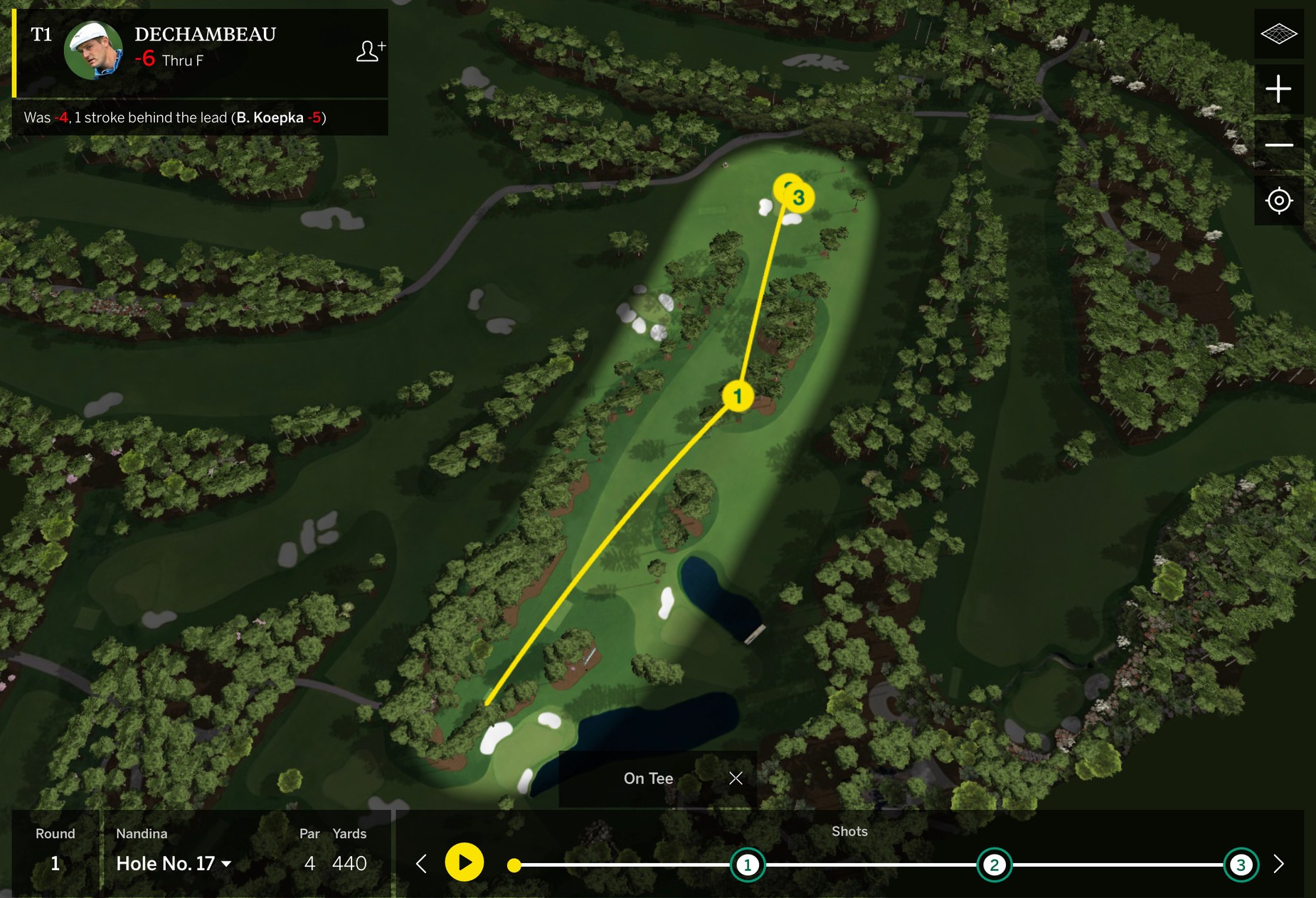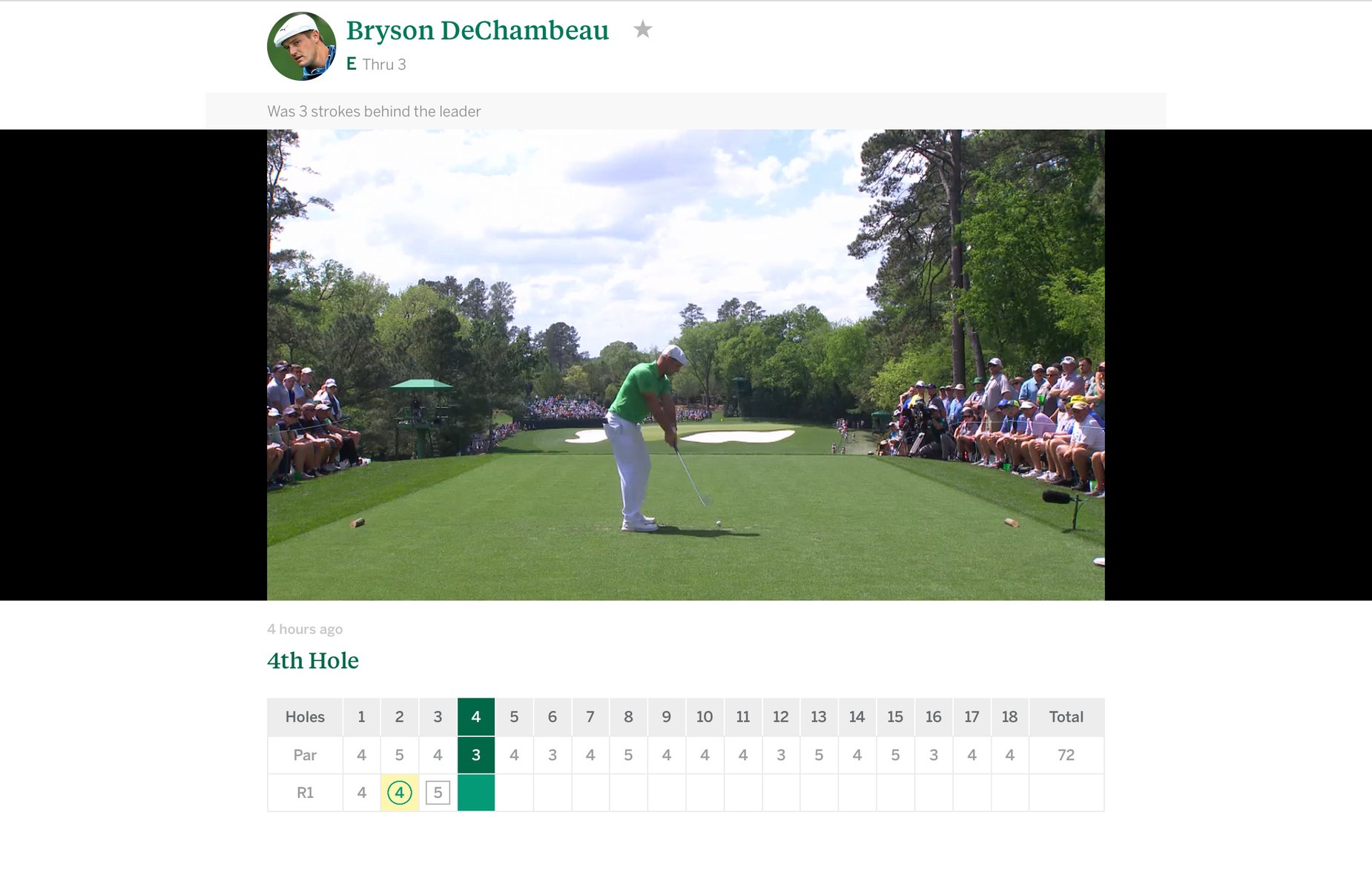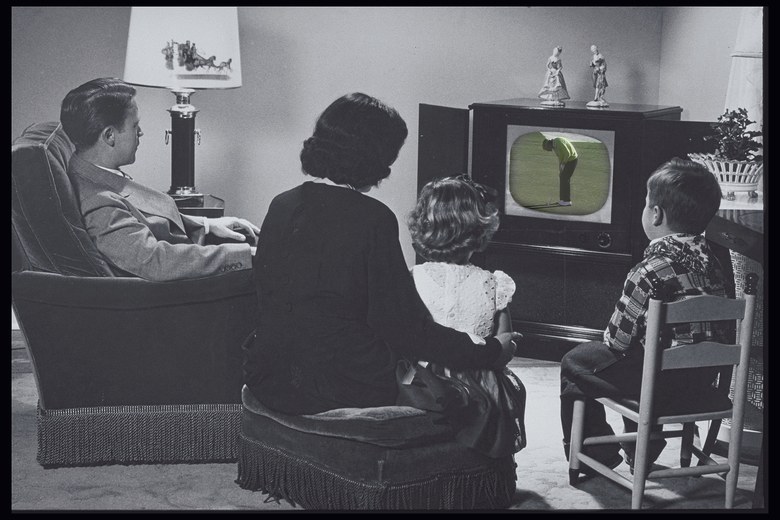By Brian Wacker
AUGUSTA, Ga. — Nine years ago, Tiger Woods played one of the most-anticipated rounds in the history of golf at Augusta National, returning from a five-month sabbatical in the wake of a Thanksgiving night car crash that unearthed a series of stunning extramarital affairs. But because Woods teed off more than two hours before television coverage came on, much of the round wasn’t seen live by anyone outside the gates of the club.
On Thursday, the swings of Woods and every other player in the field could be seen on-demand within minutes of them happening. Shot trails and yardages of each shot (both of which came instantly) as well as graphics showing the contour and break of every putt on Augusta National’s diabolical greens were, too.
It didn’t matter if you were in Augusta, Ga., or Augusta, Maine.
That’s because earlier this week club chairman Fred Ridley announced that the tournament will capture virtually every shot of every player during every round beginning this year, each one available on the event’s website and app through new leader board and tracking features.
Times they have changed at Augusta National, even if the price of a pimento cheese sandwich ($1.50) and a beer ($4) hasn’t.

“The reason we’re doing it is because we have always subscribed to the notion that we want to provide content to our fans in the way they want to receive it,” Ridley said when asked why now. “You know, the world is migrating more and more towards digital technology.”
With that technology, users were able to see and hear Woods pipe his opening tee shot 317 yards down the middle on the first hole, club twirl included, not long after the gallery that was four and five deep up both sides of the fairway saw it live.
Likewise with Rory McIlroy’s block into the trees right of the first. The next view they saw was a squirrelly chip from the Northern Irishman that drew a few “oohs,” followed by a mediocre pitch that left him a 17-footer for par that he was unable to convert.
The technology proved especially useful finding out how Henrik Stenson made a snowman on the par-5 13th: The Swede knocked his second shot into the azaleas long and left, his third just a few feet (no video of that hack), his fourth across the green and into Rae’s Creek, his sixth from the other side of the creek to 20 feet and two putts later, mercifully, the adventure was over.
“It’s been two or three years in developing,” Ridley said of the latest advancements. “We had it in a beta test mode previously, but now I feel like that we can actually execute on this. So we just thought it was something that people wanted and which supplemented our other forms of providing coverage of the tournament.”

It helps to have pockets as deep as Augusta National, which in recent years has dropped $200 million snatching up property all around its borders with no plans of stopping anytime soon. Tech isn’t cheap, either, and this latest unveiling has now set the standard for all other sporting events going forward.
Except this isn’t like any other sporting event, which begs a question: Did the Masters lose a little bit of its magic with all this too-good-to-be-true at-your-fingertips technology?
In CBS’ first broadcast of the tournament in 1956, the network provided just a half hour of coverage on Friday with one hour each on Saturday and Sunday. Chris Schenkel and Bud Palmer were behind the mics and CBS only covered holes 15 through 18, with all of its cameras stationary and most pointed at the greens.
Over the years, coverage expanded little by little. Slowly.
It was years before CBS even showed any of the front nine, and as late as the mid-1990s you often didn’t know who was in the lead on Sunday afternoon until you turned on the television for the final round. It wasn’t until 2002 (!) when the leaders were shown for all 18 holes on the last day.
Compared to other major championships, the Masters lagged when it came to the amount of live shots available to golf-thirsty fans.
But that scarcity, along with the tournament being played at the most exclusive golf club on the planet, lent a certain aura to the Masters.
That’s not to suggest things should go back to the way they were, either. In a sense now anyone can attend the Masters, no ticket required, and that’s not a bad thing.
There is also a bit of irony, by the way, that in one of the last corners of the earth where cell phones aren’t allowed, that all of the broadcast quality strokes can now be consumed with a few taps of the finger on your mobile device. Just so long as it’s not inside the gates at Augusta National.
“I think it’s a balance,” Ridley said. “What really drives us is quality. So I think quantity is important, but that is not what is going to drive our decisions. We’re not going to sacrifice quality, but we thought this was a great supplement to our traditional means of providing coverage.”
To do so, they instead sacrificed a little more of the Masters’ mystique.
What’s next?









